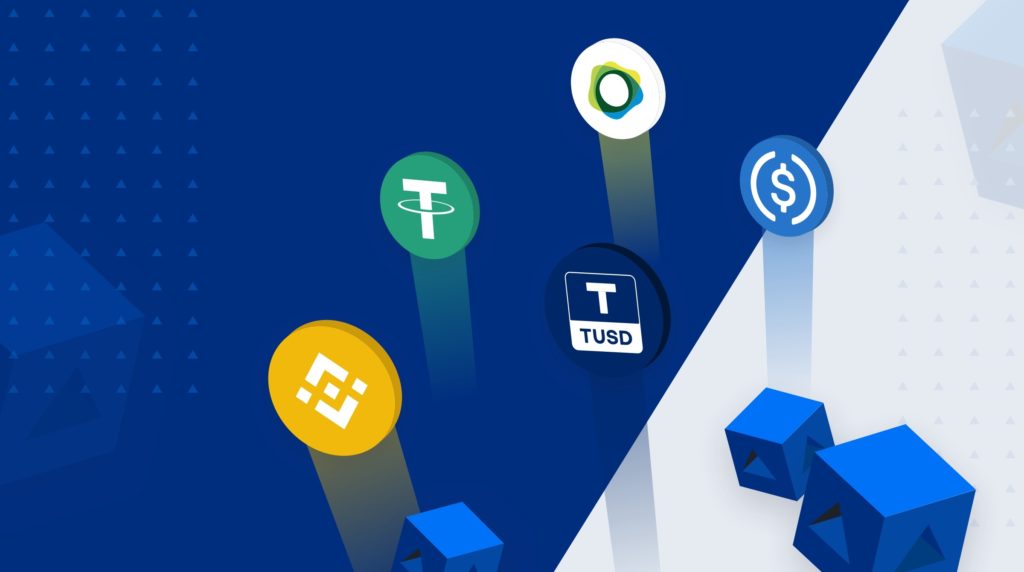Today, Fireblocks powers 1800+ financial institutions – and more than 30% of our customer base pays their monthly and annual invoices in stablecoins.
Though on the financial side we are a relatively traditional, B2B SaaS company, we’ve found that when it comes to receiving payments from our customers, stablecoins offer a level of convenience, speed, and cost savings that services like Stripe, ACH, or Swift simply can’t offer.
Over the last year, it has become clearer than ever that stablecoins represent the treasury management of the future for companies of all shapes and sizes.
How we started accepting payments in stablecoins
Last year, we began to receive requests from certain enterprise clients to pay their invoices with a credit card. Unfortunately, due to the way services like Stripe are structured and the size of our ASP, that meant we were looking at a significant transaction fee (3% of the total amount).
Considering the sizable fee, we decided to explore a few alternative payment solutions – and eventually landed on stablecoins. Luckily, our customer agreed to try it and we ended up paying just a $5 gas fee, receiving their payment in seconds.
Needless to say, this transaction went smoothly for both parties, so we began to accept stablecoin payments in earnest from a wide variety of customers. Today, stablecoins have become our absolute favorite payment method.
When we first decided to coordinate a stablecoin payment with a customer, I felt hesitant because of a few factors. At the time, I wasn’t totally confident about how stablecoin payments would appear on our financial statements, or how they’d be treated from an accounting perspective. However, as Fireblocks grows, the benefits stablecoin payments can offer us – including speed, savings, and stronger interest rates – are growing more and more important. Today, the advantages of stablecoins are beginning to outweigh the lack of clarity around certain logistics.
Why stablecoins are our favorite payment option today
![Traditional Payments vs. Stablecoin [INFOGRAPHIC]](https://www.fireblocks.com/wp-content/uploads/2021/07/Fireblocks-TraditionalPayments-vs-Stablecoins-1.jpg)
Speed
Depending on the specific service being utilized, traditional payment systems (such as Stripe, ACH, Swift, or a straightforward credit card transaction) take anywhere from 24 to 72 hours to complete a transaction.
So, the first time we received a stablecoin payment in seconds – with a negligible transaction fee – it was a revelation.
Simplicity and automation
We built our settlement network, the Fireblocks Network, to enable financial institutions and businesses to instantly transfer digital assets (crypto and fiat).
Today, we connect with our customers on the Fireblocks Network to execute stablecoin payments. We simply give them an invoice with a network ID that’s associated with our treasury management team, so they can easily send us stablecoin payments each month.
As our platform is API-based, we get notifications whenever a transaction comes through, and everything reconciles in real time. Without an API-based system like this, we have to log in to our bank account once a week to log everything manually; with stablecoins, it’s all automatic.
Access to better interest rates
Accepting payments in stablecoins also enables us to access the DeFi arsenal.
We can deposit a payment that we’ve received from a customer into a service like Compound, and receive ~10% interest on our funds year over year. That’s in contrast with a traditional bank, where we could make about 0.25% at best.
Despite these high interest rates, there’s no locking period with Compound, so you can withdraw the funds (+ any interest you’ve accrued) at any time.
Stablecoins are borderless
Stablecoins also simplify the process of international payments. We have customers in almost every territory, so we know the treasury challenges that come with serving an international customer base. With traditional payments services, it’s not unusual for funds to get locked abroad at an intermediary bank, and converting from one currency to another can be expensive.
On the other hand, stablecoins know no bounds. A customer can pay us in any stablecoin and we can use UniSwap to convert it to USDC; then we simply pay about $5 to send it to Coinbase or Circle, convert everything to fiat currency, and send it to a traditional bank account.
B2B payments services need to support stablecoins
Our experience is just one example of why it’s so important for PSPs (payments service providers) to offer stablecoin payments as an option for their B2B customers. The speed, convenience, and programmability stablecoins offer is a clear improvement over the Swifts of the world, especially for businesses exchanging repeated payments.
We predict that more and more B2B entities will move towards this type of payment model as time goes on. PSPs need to be ready to adapt if they want to retain the customer bases they’ve established; the first PSP that’s able to offer these services will gain a strong advantage.
When your customer asks “Can I send stablecoins on your platform?” in 2021, you’re going to want to be able to say yes.



